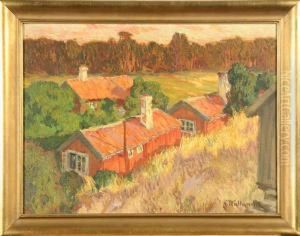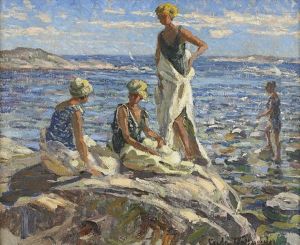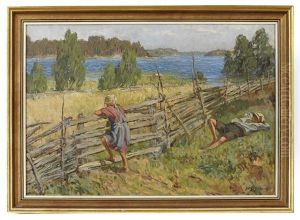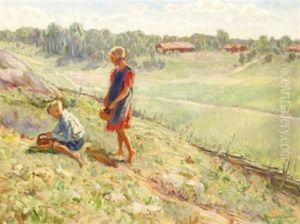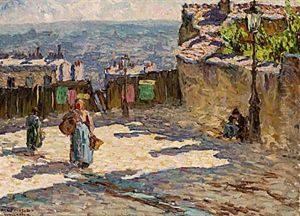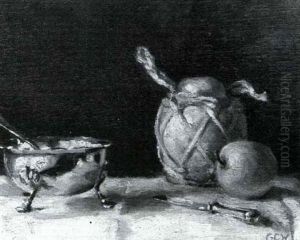Gerda Wallander Paintings
Gerda Wallander, born Anna Gerda Wallander on April 10, 1860, in Stockholm, Sweden, was a notable Swedish artist known for her landscape paintings and portraits. She was part of the wave of female artists who gained prominence in the late 19th and early 20th centuries, a time when women were beginning to receive more recognition in the field of art. Gerda was the daughter of a successful portrait painter, Johan August Wallander, and was exposed to art and its techniques from an early age.
Gerda Wallander began her formal art education at the Royal Swedish Academy of Arts in Stockholm, where she studied from 1881 to 1887. During her time at the academy, she honed her skills in painting and developed her own artistic style. She was influenced by the prevailing art movements of her time, including Realism and Impressionism, and she incorporated aspects of these styles into her work.
After completing her studies, Wallander traveled extensively throughout Europe, which was common for artists of her era who sought to gain exposure to different styles and techniques. She visited countries such as Germany, Italy, and France, where she continued to develop her craft. Her travels and studies abroad allowed her to immerse herself in the European art scene, and she exhibited her work in various salons and exhibitions.
Gerda Wallander is particularly remembered for her landscape paintings, which often depicted the Swedish countryside. Her work is characterized by a sensitivity to light and atmosphere, with a soft color palette and an attention to detail that brought her scenes to life. She also painted portraits, capturing the likeness and character of her subjects with a delicate touch.
Throughout her career, Wallander faced the challenges of being a woman in a male-dominated field. Nevertheless, she managed to achieve recognition for her work and was a respected member of the Swedish art community. Gerda Wallander never married and dedicated her life to her art. She passed away on June 5, 1926, in Stockholm. Today, her paintings can be found in various museums and collections in Sweden, serving as a testament to her skill and dedication to her craft.
